Discover 15 hidden attractions, cool sights, and unusual things to do in Gary (United States). Don't miss out on these must-see attractions: City Methodist Church, Palace Theater, and Cathedral of the Holy Angels. Also, be sure to include Marquette Park in your itinerary.
Below, you can find the list of the most amazing places you should visit in Gary (Indiana).
Table of Contents
City Methodist Church

Historical landmark in Gary, Indiana. The City Methodist Church, latterly known as City United Methodist Church is a disused church in Gary, Indiana. Once the largest Methodist church in the Midwest, it ceased as a place of worship in 1975 after a relatively brief life of just over 50 years.[1]
Address: 577 Washington St, 46402 Gary
Palace Theater

Performing arts theater in Gary, Indiana. The Palace Theater is a 1925 movie theater, now closed, located at 791 Broadway in Gary, Indiana, in the city's Emerson neighborhood. It was designed by the prominent movie palace architect John Eberson.[2]
Address: Gary, 791 Broadway
Cathedral of the Holy Angels
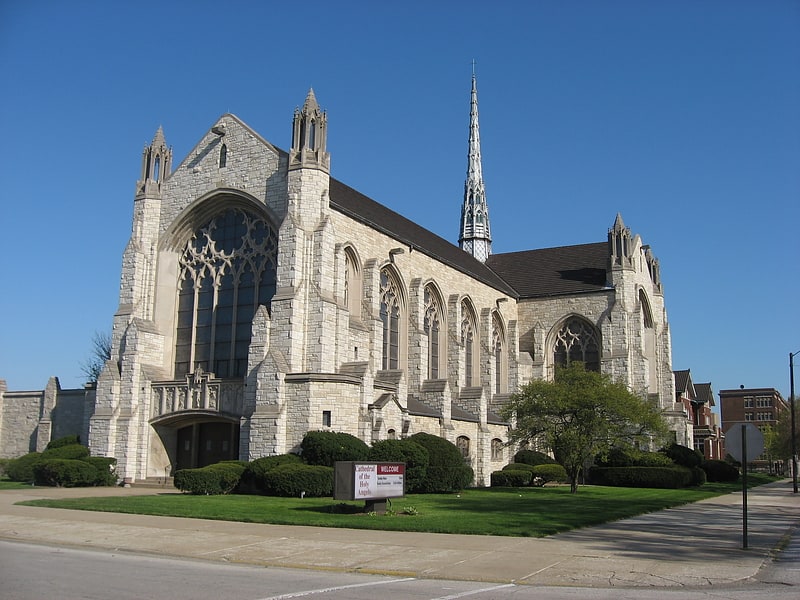
Cathedral in Gary, Indiana. The Cathedral of the Holy Angels is a Catholic cathedral located in Gary, Indiana, United States. It is the seat of the Diocese of Gary, and the home of Holy Angels Parish.[3]
Address: 640 Tyler St, 46402-2299 Gary
Marquette Park

Park in Gary, Indiana. Marquette Park, originally called Lake Front Park, is a municipal park completely surrounded by Indiana Dunes National Park. Its primary elements include 1.4 miles of white sand Lake Michigan beaches, inland ponds, impressively high sand dunes, wetlands, a lagoon, and indigenous oak savanna. The park is located within the Miller Beach community. Miller Beach was once an independent municipality. However, in 1918 shortly before the establishment of Marquette Park, the Town of Miller was forcibly annexed into the municipal boundaries of Gary, Indiana. The park includes the Octave Chanute museum, registered as a National Landmark of Soaring.[4]
St. Augustine's Episcopal Church
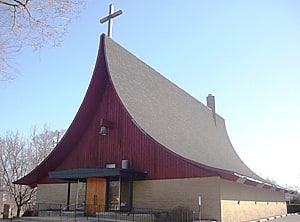
Building in Gary, Indiana. St. Augustine's Episcopal Church in Gary, Indiana, is a historically black congregation and building in the Episcopal Diocese of Northern Indiana. The congregation was chartered in 1927, and the building, constructed in 1958, was listed on the National Register of Historic Places in 2013 after being nominated for listing by a parishioner.[5]
Address: 2425 W 19th Ave, 46404 Gary (West Gary)
Jackson family home
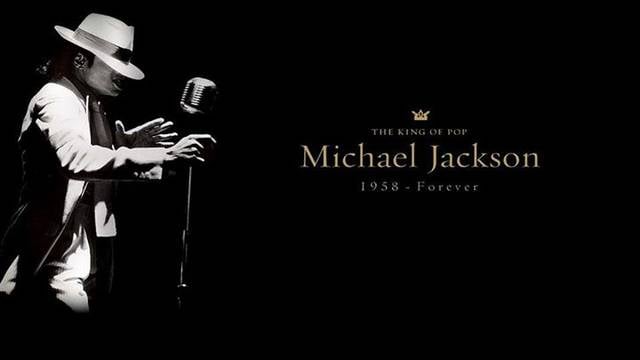
Historical place, Museum
Address: 2300 Jackson St, 46407 Gary (South Gary)
Knights of Columbus Building
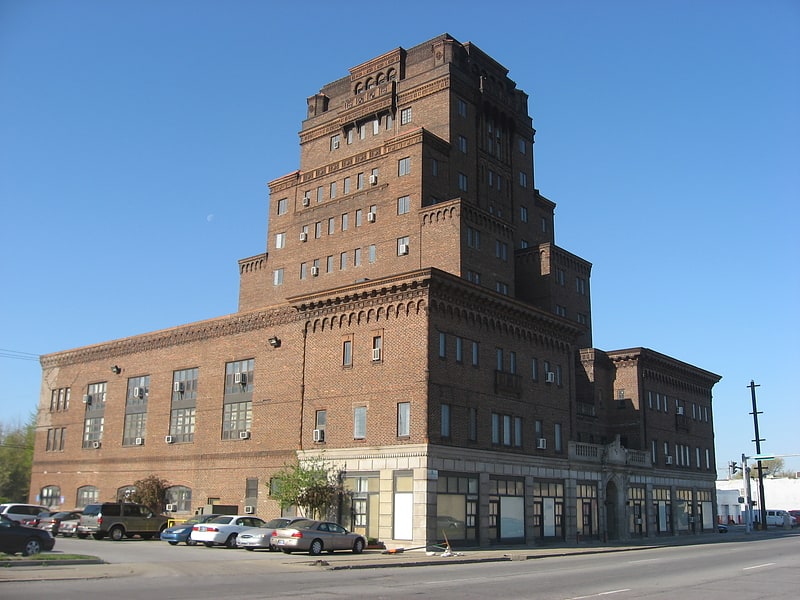
Building in Gary, Indiana. The Knights of Columbus Building is a historic building located at Gary, Indiana. It was built in 1925, and is a ten-story brick building that has served as a hotel, a clubhouse, a restaurant, and a sport facility.
It was listed on the National Register of Historic Places in 1984.[6]
Address: 333 West 5th Avenue, Gary
Miller Woods
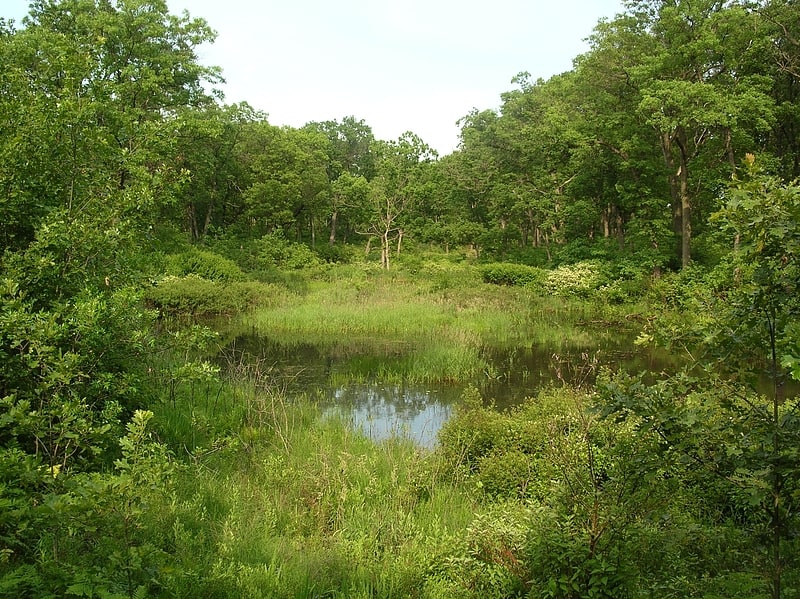
Hiking area in Gary, Indiana. Miller Woods is the far western unit of Indiana Dunes National Park in the lakefront community of Miller Beach, Indiana. Miller Woods is home to the federally endangered Karner Blue butterfly and the federally threatened Pitcher's thistle. Miller Woods is also the only part of the National Park that also adjoins the Grand Calumet River.
The northern part of Miller Woods adjoins Lake Michigan, and includes foredunes and high dunes, as well as blowouts and pannes. The southern and larger part of Miller Woods consists of rolling ridge and swale, with beach ridges dominated by oak savanna. This southern part is also traversed by current and former rail lines. The northern and southern parts are divided by the Grand Calumet River, including the westernmost of the three lagoons that mark the river's modern-day headwaters and former mouth.[7]
Miller Town Hall
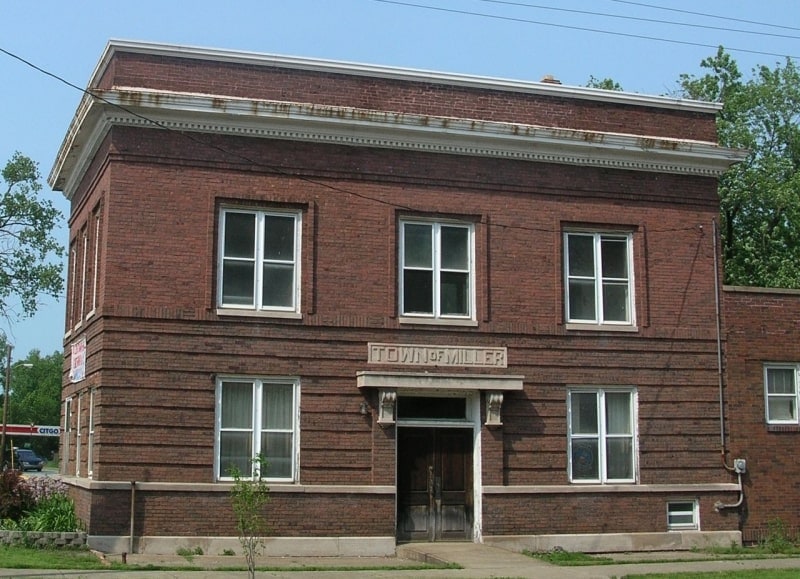
Historical place museum in Gary, Indiana. The Miller Town Hall is a two-story brick building in the Miller Beach community in Gary, Indiana, in the United States. It was constructed to serve as the administrative building for the town of Miller, incorporated in 1907, and was used for that purpose until Miller's annexation into Gary in 1918. It later served as a fire station through much of the 20th century, and is currently used for storage only.
The Miller Town Hall was added to the National Register of Historic Places in 1978.
Although the Town Hall is owned by the city, the grounds are landscaped and maintained by local volunteers, including members of the Miller Historical Society and Miller Garden Club. In 2011, the Town Hall became a flashpoint of controversy when the city government attempted to stop neighborhood volunteers from removing broken concrete from the front of the building. Although the work went forward, lead volunteer James Nowacki was charged with creating a public nuisance.[8]
Gary Bathing Beach Aquatorium
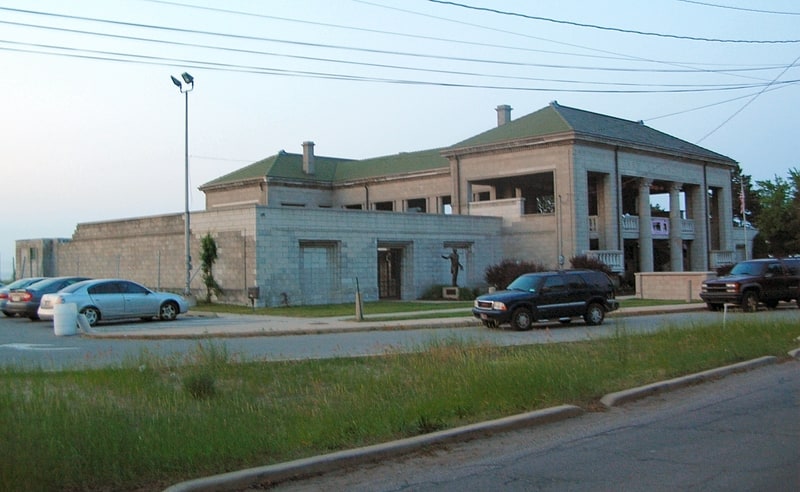
Museum. Gary Bathing Beach Aquatorium, formerly known as Lakefront Park Bathhouse and also known as Chanute Aquatorium, is located at One Marquette Drive at Miller Beach in Marquette Park, Gary, Indiana. The aquatorium was designed by George Washington Maher and constructed in 1921. It was listed on the National Register of Historic Places on November 25, 1994. It has been converted to a museum of flight, honoring Octave Chanute and the Tuskegee Airmen.
It was built as a shower/bathroom/changing facility in 1921 and was dubbed the Lakefront Park Bathhouse. It was a major focal point of the Miller Beach community for decades. The building is architecturally significant as one of the earliest examples of pre-cast concrete modular construction. Ninety percent of the building is built with only six basic cast blocks, the most basic being the T-Block, a precursor of today's standard concrete block.
By the 1960s the facility was falling into major disrepair. In 1971 the building was closed to the public and boarded up.
The Aquatorium was rescued from demolition by the Chanute Aquatorium Society in 1991. The Society invented the word Aquatorium meaning "place to view the water" in order to disassociate the structure with the word bathhouse.[9]
Address: Marquette Park Road, 46403 Miller Beach (Northeast Gary)
Gary Land Company Building
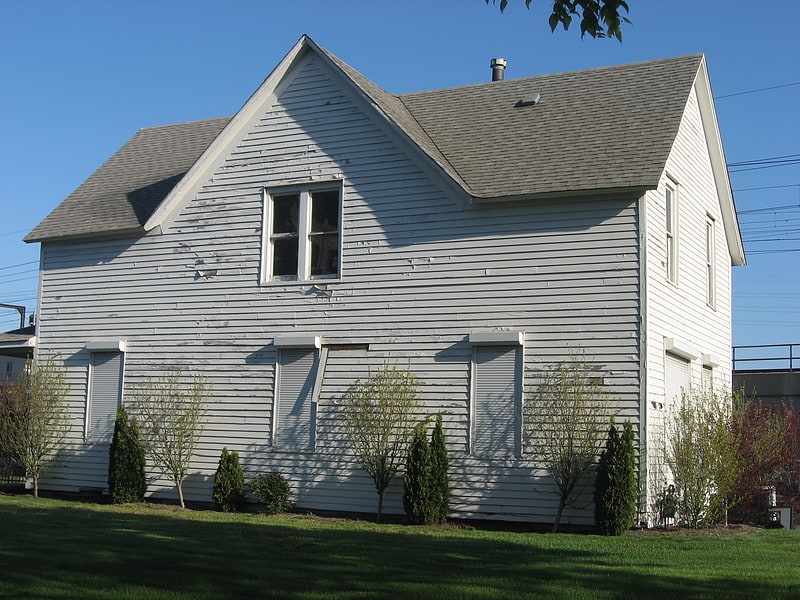
Gary Land Company Building, also known as Gary's First Town Hall, is a historic building located at Gary, Indiana. It was built in 1906, and is a 1+1⁄2-story, balloon frame building with a cross-gable roof. It measures about 20 feet wide and 40 feet deep. It was converted to a residence in 1909 and moved to its present site in 1956. It was the first building in Gary, it has functioned as a city hall, post office, school, and business building. The building currently serves as an historical museum and visitor's bureau for school tour groups and visitors to the City of Gary.
It was listed on the National Register of Historic Places in 1979.[10]
Louis J. Bailey Branch Library
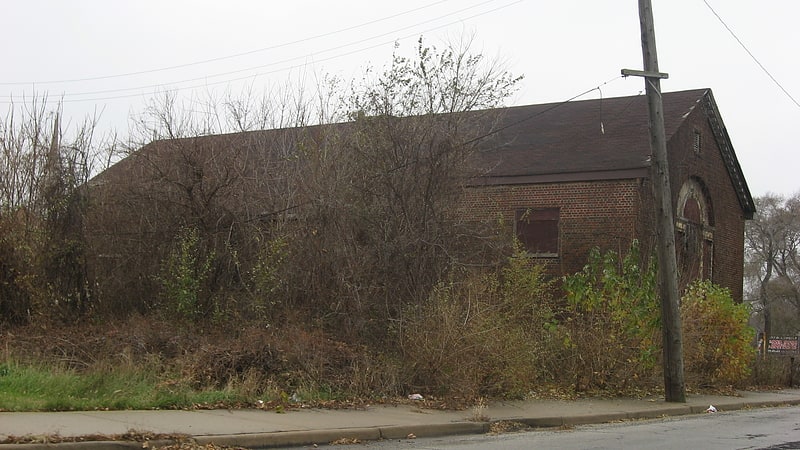
Historical landmark in Gary, Indiana. The Louis J. Bailey Branch Library is a historic Carnegie library building located at Gary, Indiana. It was built in 1918, and is a one-story, Colonial Revival style brick building on a raised basement. It has a slate gable roof and projecting entrance block with Corinthian order pilasters. The building was constructed with a $25,000 grant from the Carnegie Foundation. Beginning in 1919, it housed the Gary International Institute in the building's basement. The branch closed about 1963.
It was listed on the National Register of Historic Places in 2004 as the Louis J. Bailey Branch Library-Gary International Institute.[11]
Barney Sablotney House
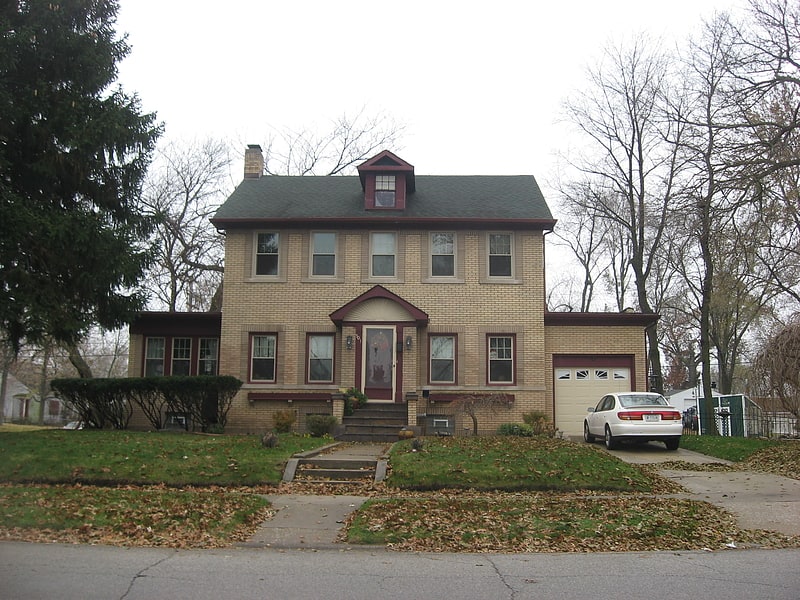
Historical landmark in Gary, Indiana. Barney Sablotney House is a historic home located at Gary, Indiana. It was built in 1928, and is a 2+1⁄2-story, five bay by two bay, Colonial Revival style frame dwelling sheathed in yellow glazed brick. The main block is flanked by one-story wings.
It was listed in the National Register of Historic Places in 2012.[12]
American Sheet and Tin Mill Apartment Building

The American Sheet and Tin Mill Apartment Building, one of the Edison Concept Houses, is a historic building at 633 West 4th Avenue in Gary, Indiana. The building was designed by D. F. Creighton and built in 1910. It was added to the National Register of Historic Places on June 17, 2009. It was built by the United States Sheet & Tin Plate Co.
Thousands moved to Gary in the early 1900s for work in burgeoning steel industry. Providing housing quickly and affordably, Thomas Edison's 1906 proposal of pouring a concrete mixture into a single mold for the facades, roof, stairs, walls, and other parts of a house was adopted for company housing (Edison was not directly involved).[13]
Theodore Roosevelt College and Career Academy

High school in the united states in Gary, Indiana. Theodore Roosevelt College and Career Academy, formerly known as Theodore Roosevelt High School and often referred to as Gary Roosevelt, was a charter school located in the Midtown neighborhood of Gary, Indiana, United States. In February 2020, the Distressed Unit Appeal Board voted to close Roosevelt after a series of burst pipes throughout the winter of 2019 left the school in need of expensive repairs. At the time of its closing, the school was managed by EdisonLearning and was divided into a senior and collegiate academy for grades 9–12 and a junior academy for grades 7–8. Roosevelt was part of the Gary Community School Corporation until 2012, when the Indiana Department of Education took control of the school due to poor academic performance and contracted with EdisonLearning to operate the school. Under Edison, Roosevelt was reorganized into academies and the school received its final name. Athletic teams at Roosevelt were known as the Panthers and the school colors were black and gold. Roosevelt was part of the Indiana High School Athletic Association as a member of the Northwestern Conference.
The origins of the school date to 1908, when a one-room school was established for Gary's African American children at Twelfth Avenue and Massachusetts Street. After portable classrooms were relocated to Twenty-fifth Avenue and Harrison Street the school was named the Roosevelt Annex. The school began offering secondary-level courses in 1925. In 1927, the Emerson School Strike prompted the city to officially segregate its schools by building a separate high school for Black students. The new building was designed by architect William Butts Ittner, constructed in 1929, and dedicated as Roosevelt High School in April 1931. It was named in honor of former U.S. President Theodore Roosevelt. The first graduation ceremony at the new high school was held in 1933. The Gary Roosevelt was developed during the early decades of the twentieth century as part of William Wirt's Gary System of education, which offered vocational training and college preparatory classes to high school students, as well as extracurricular activities and athletic programs. The school building was added to the National Register of Historic Places in December 2012.[14]